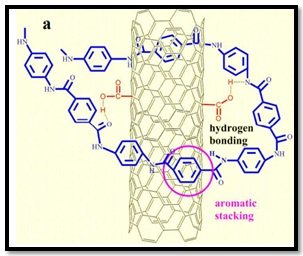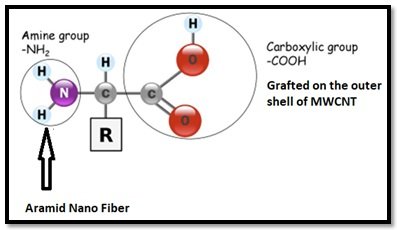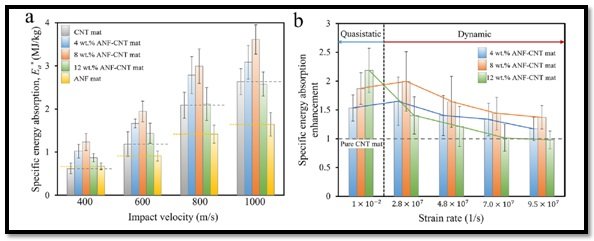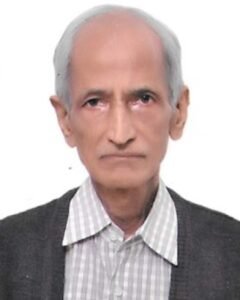By Dr. Yashwant Mahajan
Introduction-The protection of structures and devices from the penetration of high-energy impacting (Extreme Energy Absorption by Nanofibrous Mats Under Hyper sonic Impacts) projectiles is an issue of paramount importance in several areas of technology, such as materials science and engineering, automotive, aeronautics, space, and defence. With the advent of hypersonic missiles and high energy weapons, especially laser weapons,as well as the existence of orbital debris and micrometeoroids (1) traversing at hyper velocity speeds in and around orbit there is a perennial danger of collision with space vehicles/spacecrafts causing potentially serious damage or catastrophic failure.
Moreover, there is also a great risk for personal and armoured vehicles, drones, aircrafts, battleships and military personnel being hit by lethal weapons (warhead/combat projectile)during a terrorist attack or an aggression by an adversary nation. Therefore, in order to protect these strategic assets, there is an urgent need to develop novel and ultra-light energy-absorbing materials with exceptional dynamic performance under ballistic threats. In this respect, currently, (Extreme Energy Absorption by Nanofibrous Mats Under Hyper sonic Impacts) high performance fibres, including Kevlar® KM2 Plus, Twaron®, Technora®, Tejinconex®, DSM Dyneema® and Zylon® (PBO), Honeywell Spectra® Fiber (2-8)are being employed in the form of wearable textiles and composites (e. g., Spectra Shield® 5128 (9) and Dyneema® UD (10)).
Recently, fibres based on carbon nanotubes and their composites for ballistic armour applications are also being developed(11)). Graphene is another emerging candidate showing great potential for ballistic armour (Extreme Energy Absorption by Nanofibrous Mats Under Hyper sonic Impacts) application (12).Interestingly, these high-performance fibrous materials are much lighter than their counterpart heavy metallic protective materials and show much greater energy absorption capacity under dynamic conditions. Furthermore, they have superior ability to manufacture into form of wearable textiles and composites. Nanomaterials have the potential to exhibit excellent energy absorption capability which arises due to their distinctive deformation modus operandi, which suggests that they can play a pre-eminent role in developing high performance protective materials. For example, in one of the studies(13), when multilayer graphene subjected to microscopic ballistic tests,it revealed that the specific penetration energy (Ep* ∼ 1.26 MJ/kg (900 m/s impact)) for multilayer graphene is ~10 times more than literature values for macroscopic steel.
In another example, randomly oriented mats of multiwall carbon nanotubes (MWCNTs) were subjected to a hypersonic micro-projectile impact test (14). The ballistic impact test resulted in extraordinary kinetic energy (KE) absorption. The KE of the projectile is dissipated via inter-fiber van der Waals (vdW) interactions, adiabatic heating, tube stretching, and eventually fracture of tightly stretched tubes and the newly formed fibrils. The energy absorbed per unit mass of the film is ranging from 7–12 MJ kg−1, much greater than any other material.
The performance of protective materials against projectile impacts is strongly dependent on high specific energy absorption and efficient stress delocalization (13).Specific energy absorption is measured in terms of a unit-weight material to dissipate the kinetic energy of an impacting projectile. The stress delocalization efficiency represents how fast the impact-triggered stress waves travel form the point of impact such that the localized failures can be attenuated.In this connection, it has been proposed the following relationship according to the experimental results:
![]()
Where Ep* and Ed* are the specific energy dissipation and the specific delocalized penetration energy, respectively. Ed*is an indicator to evaluate the impact energy delocalization ability of the material beyond the projectile strike area of the material as more extended un deformed region beyond impact zone contributes to the energy dissipation. Under extreme loading conditions nanofibrous materials have the ability to achieve spectacular performance due to the unique intrinsic nature of nanofibers as well as their mesoscopic structural architecture, which provides highly interactive characteristics with a high surface-to-volume ratio.
The energy absorption capacity of fibrous materials can be enhanced by improving inter-fiber interactions, which not only escalates fibre-fibre frictional energy dissipation (15) but also increased stored strain energy (elastic potential energy) and kinetic energy of the target material. One of the important parameters is the nature of fibre-fibre interfacial bond that determines the amount of energy dissipated during fracture of a fibrous material. One of the prime examples is the assembly of CNTs in the form of macroscopic structures such as forests, yarns or sponges. In this case,because of the weak van der Waals interaction that exists between CNTs, they have limited capacity to transfer the load and hence, the energy absorption that occurs during fracture is quite low (16).In contrast, aramid (also called as Kevlar® which is the trademarked brand name for the aramid fiber made by DuPont™) nanofiber (ANF) mats exhibit superb energy absorption capacity derived from their high modulus and strength as well as more importantly, the increased hydrogen bond interactions among the ANFs (17).
Description of the Technology-In the present work, a team of researchers led by RamathasanThevamaran from University of Wisconsin-Madison have designed and developed lightweight aramid nanofiber (ANF) reinforced MWCNT mats having strong interfacial interactions resulting in enormous increase in energy absorption and alleviation of localized fracture during high-velocity (400 m/s to 1 km/s) laser-induced micro projectile impacts (18).
Initially, the researchers have separately prepared pristine ANF((A typical process of making ANFs as reported in literature is (17)) and functionalized MWCNT (by grafting of carboxyl groups onto their outer layers) mats and subsequently,they were blended together to form ANF-CNT mats (containing 4,8 and 12 wt. % ANF each). It is well known that weakvdW interfacial interaction forces (bond energy of ∼0.1−1 kcal/mol) (16)exist between CNTs, therefore, their dissipation energy is very limited. Whereas, in Kevlar-based nanofiber (ANF) mats strong inter-fiber hydrogen bonds (bond energy of ∼2−30 kcal/mol) are present, which

Figure 1)Molecular structures of ANFs and CNTs showing the potential interactions including hydrogen bonding and π−πstacking
“Reprinted with permission from (Strong and Stiff Aramid Nanofiber/Carbon Nanotube Nanocomposites, Jiaqi Zhu, Wenxin Cao, Mingli Yue, et al, ACS Nano, American Chemical Society, Mar 1, 2015) Copyright © 2015, American Chemical Society”
results in superior mechanical properties.Moreover, as shown in Figure 1, it has been established that these ANF-CNT mats embody π−π stacking(19) and hydrogen bonds. Furthermore, when a small quantity of ANF is added to functionalized CNT mats it results in a dramatic improvement in quasistatic and dynamic mechanical properties, which can be attributed to the multiple interfacial synergism occurring between nanotubes and ANFs, including stronger and reconfigurablehydrogen bonding(present in ANF mats) and pi-pi stacking(19)interactions, whichare likely to be the key parameters responsible for the observed superior improvement in mechanical properties (20). It is observed that the highest specific energy absorption, Ea*, touches up to 3.6 MJ/kg at 1 km/simpact, which is 40% higher than that of the pristine MWCNT mats and much greater than that of widely used macroscopic protective materials.
For the sake of clarity at this juncture, it is particularly,significant to note that Thevaraman has succinctly elucidated the importance of hydrogen bonding, which was published in news item of the University of Wisconsin (21): “The hydrogen bond is a dynamic bond, which means it can continuously break and re-form again, allowing it to dissipate a high amount of energy through this dynamic process,” Thevamaran says. “In addition, hydrogen bonds provide more stiffness to that interaction, which strengthens and stiffens the nanofiber mat. When we modified the interfacial interactions in our mats by adding Kevlar nanofibers, we were able to achieve nearly 100% improvement in energy dissipation performance at certain supersonic impact velocities.”

Figure 2) Illustration showing the structure of the MWCNT mat; theintroduction of ANFs as reinforcement augments the weakervan der Waals interactions between adjacent CNTs in initialMWCNTs mat with stronger hydrogen bonds and π−π stacking (19)between ANFs and functionalized MWCNTs.
“Reprinted with permission from (Extreme Dynamic Performance of Nanofiber Mats under Supersonic Impacts Mediated by Interfacial Hydrogen Bonds, Jizhe Cai, Claire Griesbach, RamathasanThevamaran, ACS Nano, American Chemical Society, Dec 1, 2021) Copyright © 2021, American Chemical Society”
As mentioned earlier, only weak vdW interfacial interaction forces exist infunctionalized MWCNT mats, whereas ANFs mats exhibit strong inter-fiber interactions arising from aromatic π−π stacking (19) as well as hydrogen bonding. As shown in Figure 3 when functionalized MWCNTs are reinforced with ANFs for the fabrication of composite ANF-CNT mats, it gives rise to aromatic π−π stacking (19)and hydrogen bonding between the Amine (−NH) group in ANFs and the carboxyl (-COOH) functional group grafted onto the outer shell of the MWCNTs (22).

Figure 3- A diagram showing the bonding between the −NH group in ANFs and the carboxyl (-COOH) functional group grafted onto the outer shell of the MWCNTs
(Adapted from Ref: YASSINEMRABET/PUBLIC DOMAIN, WIKIMEDIA COMMONS)
Figure 4 a and b illustrate the specific energy absorption(Ea*)and specific energy absorption enhancement in CNT, ANF and ANF-CNT mats, respectively. The pristine CNT mats show that the Ea* has a comparable value to that of the pure ANF mats at the lowest impact velocity of 400m/s and it increases to 2.6 MJ/kg at 1 km/s impacts which is about 63% greater than that of ANF mats. This behaviour could be attributed to the greater stiffness of individual CNTs in comparison with the

Figure 4) (a) Specific energy absorption (Ea*) of ANF, CNT, and ANF−CNT mats with different contents of ANF (4, 8, and 12 wt %). The dashed lines label the performance of pure CNT and ANF mats. (b) Specific energy absorption enhancement of ANF−CNT mats with different ANF contents compared to pure CNT mats with increasing deformation strain rate under quasistatic tensile testing and supersonic microprojectile impacts.
“Reprinted with permission from (Extreme Dynamic Performance of Nanofiber Mats under Supersonic Impacts Mediated by Interfacial Hydrogen Bonds, Jizhe Cai, Claire Griesbach, RamathasanThevamaran, ACS Nano, American Chemical Society, Dec 1, 2021) Copyright © 2021, American Chemical Society”
Kevlar fibres as well as occurrence of rapid stress delocalization in CNT mats. Reinforcing the CNT mats with a modest amount (4-12 wt. %) of ANFs could augment existing vdW interaction in CNT by the introduction of stronger hydrogen bonds, which has a strengthening effect on inter-tube sliding induced by reconfigurable hydrogen bond interaction. It would imply that when the ANF-CNT mats are subjected to projectile-induced impacts a series of repetitive events such as bond formation, breaking and reformation would occur during dynamic evolution of this unique morphological nanofibrous structure resulting in stronger and tougher material. It has been reported in the present work that there was an improvement of Ea* by 100% in ANF−CNT mats with8 wt % ANF at 400 m/s impacts.
Further, it was found that increasing wt.% concentration of ANF would result in an increase of specific energy absorption capacity of ANF-CNT mats and an optimal concentration of ANF is 8 wt. %, beyond which (For example, 12 wt. %) there is not much improvement in Ea* under dynamic conditions. However, under quasi-static loading an addition of 12 wt. % ANF exhibited the highest specific energy absorption enhancement (Figure 4 (a) and (b)). This type of distinctive characteristic arises because the addition of ANF beyond a certain point would impede to a great extent the long-range mutual sliding of CNT-CNT, which is supposed to be a dominant energy dissipating mechanism, hence it would result in a lowering of Ea* in 12 wt % ANF−CNT mats.
It was discovered by the researchers that ANF−CNT mats display strong strain rate dependency (under quasistatic tensile testing and supersonic) micro projectile impacts that arises from the response time scales of the inter molecular hydrogen bond interactions (a cascade of hydrogen bond breaking and reforming events). As depicted in Figure 4 (b)with the addition of ANF, initially there is an enhancement in Ea* from quasistatic to dynamic regime, but in the later stages there is a decrease with increasing strain rates. The increase in specific energy absorption enhancement by ANF reinforcement from quasistatic to dynamics regimes potentially stems from the strain-rate-dependent intrinsic polymer properties(23) as well as the inter-fiber interactions. With further increase in impact velocity, the decreasing time is available for a continuous breaking and reformation of hydrogen bonds at the very high strain rates (upto 9.5 × 107 s−1), which reduces the ability of ANF−CNT mats to dissipate projectile kinetic energy. This limitation decreases the ANF−CNT mat’s Ea* enhancement over CNT mats with increasing strain rate.
Figure 5 (a) shows SEM images of ANF-MWCNT nanofibrous network subjected to impact loading and it reveals undeformed region, protruded strike area of projectile that is surrounded by strain delocalization zone, wrapping of MWCNT by ANF, stretched and broken ANF and lastly broken MWCNT. The Figure also illustrates in a diagram the ANF connected MWCNT network subjected to an impact loading that undergoes complex modes of deformation, including tangential or radial stretching, sliding over CNTs, and ultimately breaking of ANFs and MWCNTs contributing to energy dissipation. Figure 5 (c) depicts in a diagram approximate time scales of hydrogen bond breaking and reformation relative to the tensile deformation duration under microprojectile impacts at 400 m/s to 1 km/s velocities and quasistatic tensile testing.

Figure 5) (a) SEM images of the undeformed region showing connected CNTs nanofibrous network by ANF and deformation zone revealing the energy dissipation mechanisms beyond the inter-fiber sliding, including broken ANFs between MWCNTs and broken MWCNTs. (b) Illustration of the ANF−CNT interactive deformation with strengthened interfacial interactions. (c) Illustration of approximate time scales of hydrogen bond breaking and reformation relative to the tensile deformation duration under microprojectile impacts at 400 m/s to 1 km/s velocities and quasistatic tensile testing.
“Reprinted with permission from (Extreme Dynamic Performance of Nanofiber Mats under Supersonic Impacts Mediated by Interfacial Hydrogen Bonds, Jizhe Cai, Claire Griesbach, Ramathasan Thevamaran, ACS Nano, American Chemical Society, Dec 1, 2021) Copyright © 2021, American Chemical Society”
Conclusion-The present work has conceptualized a novel approach for designing and developing nanofibrous ANF reinforced MWCNT mats, which embodies inter-fiber hydrogen bonds promoting rate dependent reinforcing effect resulting in lightweight, strong, tough and ballistic resistant materials which can even resist hypersonic impacts. This design strategy provides new avenues to create high performance materials for applications in extreme dynamic environment.
Further Reading:
- Orbital Debris and Micrometeoroids (MMOD), https://www.nasa.gov/centers/wstf/site_tour/remote_hypervelocity_test_laboratory/micrometeoroid_and_orbital_debris.html
- Kevlar® Fiber for Military—KM2 Plus—the Most Protective Dupont Fiber for the Most Hazardous Duty. https://www.dupont.com/products/kevlar-km2-plus.html
- Twaron® Aramid – High-Performance Para-Aramid, https://www.google.com/search?q=twaron%C2%AE&oq=Twaron%C2%AE&aqs=chrome.0.0i512.4440j0j4&sourceid=chrome&ie=UTF-8
- Technora® – High Performance Aramid Fiber, https://www.google.com/search?q=technora%C2%AE&oq=Technora%C2%AE&aqs=chrome.0.0i512j0i30.5978j0j9&sourceid=chrome&ie=UTF-8
- Looking for Superior Meta-Aramid Fiber? – Teijin Aramid, https://www.teijinaramid.com/en/products/teijinconex/
- Dyneema®, with you when it matters. Always, https://www.google.com/search?q=DSM+Dyneema%C2%AE&oq=DSM+Dyneema%C2%AE&aqs=chrome.0.69i59j0i22i30l2j0i22i30i457j0i22i30l6.2776j0j4&sourceid=chrome&ie=UTF-8
- ZYLON® (PBO fiber) Technical Information, https://www.toyobo-global.com/seihin/kc/pbo/zylon-p/bussei-p/technical.pdf
- Spectra® Fiber Capability Guide – Industrial – Honeywell, https://industrial.honeywell.com/content/dam/industrial/en/documents/document-lists/marketing/SpectraFiber-CapabilityGuide-Brochure.pdf
- Spectra Shield® 5128 – Industrial – Honeywell, https://www.google.com/search?q=Spectra+Shield%C2%AE+5128&oq=Spectra+Shield%C2%AE+5128&aqs=chrome.0.69i59j0i22i30j69i60.2407j0j4&sourceid=chrome&ie=UTF-8
- Dyneema® UD, https://www.dsm.com/dyneema/en_GB/our-products/dyneema-ud.html
- Carbon Nanotubes and The Pursuit ofthe Ultimate Body Armor, the full article – “Pursuit of the Ultimate Body Armor” – with an extensive list of references had appeared in the July issue of Nanotech Insights, https://www.nanowerk.com/spotlight/spotid=17548.php
- Bullet Hits Confirm Graphene’s Strength (W/Video), https://www.nanowerk.com/nanotechnology-news/newsid=38262.php
- Jae-Hwang Lee, Phillip E. Loya, Jun Lou, and Edwin L. Thomas,Dynamic Mechanical Behaviour of Multilayer Graphene Via Supersonic Projectile Penetration, Science, 28 Nov 2014, Vol 346, Issue 6213, pp. 1092-1096, DOI: 10.1126/science.1258544
- Hyon, J., Lawal, O., Thevamaran, R., Song, Y. E., Thomas, E. L., Extreme Energy Dissipation via Material Evolution in Carbon Nanotube Mats. Adv. Sci. 2021, 8, 2003142. https://doi.org/10.1002/advs.202003142
- J. Briscoe, F. Motamedi, The Ballistic Impact Characteristics of Aramid Fabrics: The Influence of Interface Friction, Wear, Volume 158, Issues 1–2, 1992, Pages 229-247, ISSN 0043-1648, https://doi.org/10.1016/0043-1648(92)90041-6.
- Cécile A.C. Chazot, A. John Hart,Understanding and Control of Interactions Between Carbon Nanotubes and Polymers for Manufacturing of High-Performance Composite Materials, Composites Science and Technology, Volume 183, 2019, 107795, ISSN 0266-3538, https://doi.org/10.1016/j.compscitech.2019.107795
- Ming Yang, Keqin Cao, Lang Sui, et al, Dispersions of Aramid Nanofibers: A New Nanoscale Building Block, ACS Nano, 2011, 5, 9, 6945–6954, https://doi.org/10.1021/nn2014003
- Lee, Jae-Hwang; Veysset, David; Nelson, Keith; Thomas, Edwin, Laser Induced Projectile Impact Test (LIPIT): A Micron-Scale Ballistic Test for High-Strain Rate Mechanical Study of Nano-Structures, https://ui.adsabs.harvard.edu/abs/2012APS.MARP26008L/abstract
- Pi-Stacking (Chemistry), https://en.wikipedia.org/wiki/Pi-Stacking_(chemistry)#:~:text=In%20chemistry%2C%20pi%20stacking%20(also,pi%20bonds%20of%20aromatic%20rings.
- Jiaqi Zhu, Wenxin Cao, Mingli Yue, Ying Hou, Jiecai Han, and Ming Yang, Strong and Stiff Aramid anofiber/Carbon Nanotube Nanocomposites, ACS Nano, 2015 9 (3), 2489-2501, DOI: 10.1021/nn504927e
- New Lightweight Super Material Could Battle Bullets, Deflect Space Debris, February 28, 2022 by Adam Malecek, https://news.wisc.edu/new-lightweight-super-material-could-battle-bullets-deflect-space-debris/
- Jiaqi Zhu, Wenxin Cao, Mingli Yue, Ying Hou, Jiecai Han, and Ming Yang, Strong and Stiff Aramid Nanofiber/Carbon Nanotube Nanocomposites, ACS Nano, 2015 9 (3), 2489-2501, DOI: 10.1021/nn504927e
- Siviour, C.R., Jordan, J.L., High Strain Rate Mechanics of Polymers: A Review, dynamic behaviour mater. 2, 15–32 (2016). https://doi.org/10.1007/s40870-016-0052-8
About Author

Dr. Yashwant R. Mahajan was Technical Advisor at International Advanced Research Centre for Powder Metallurgy and New Materials (ARCI), Hyderabad, and also at ARC-I’s Centre for Knowledge Management of Nanoscience and Technology (CKMNT), Hyderabad. He obtained his Ph.D. degree in Physical Metallurgy in 1978 from Polytechnic Institute of Brooklyn, New York. Dr. Mahajan made major contributions in the areas of MMCs, advanced ceramics, and CMCs. Under his leadership, a number of ceramic- based technologies were developed and transferred to the industry. He has published more than 130+ technical papers in peer-reviewed journals and conference proceedings and holds 13 patents (including 2 US). Dr. Mahajan is a recipient of NRC Associateship of National Academy of Sciences, USA, the best metallurgist of the year award (IIM), MRSI Medal, MRSI-IISC superconductivity award, and VASVIK Medal.
email: mahajan@nanodigest.in



































